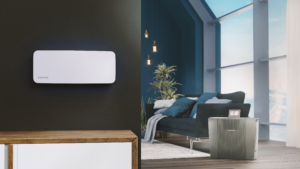What is formaldehyde?
Formaldehyde (CH2O) is a colorless, toxic gas with a pungent smell and is flammable at room temperature. Formaldehyde is used in many industries, though is most commonly used in the chemical industry.
Where does formaldehyde come from?

Formaldehyde is often found in things we come across every day such as building materials, composite wood products (i.e. particleboard or plywood), glues and adhesives, wallpaper and paints, insulation, preservatives for medicine, cosmetics, or even food. Fertilizers, pesticides, disinfectants, germicides, and embalming fluid are a few of the chemicals which frequently contain formaldehyde as well. In addition to manmade chemicals and materials, formaldehyde can also be found naturally occurring in the environment. During the decay of plant material in the soil and normal chemical processes, formaldehyde is produced. Further, formaldehyde is a byproduct of combustion emissions from cigarette smoke, wood-burning and fuel-burning appliances, gasoline, and kerosene.
What are the dangers of formaldehyde?
According to the EPA, formaldehyde can irritate the skin, eyes, nose, and throat. Prolonged exposure to formaldehyde can be associated with certain types of cancer. Although children, older adults, and those with respiratory issues may be more susceptible to formaldehyde, the risk posed to a person’s health depends on the concentration levels in the air, length of exposure time, as well as the individual’s sensitivity levels.
How to reduce formaldehyde exposure

Luckily, there are ways to lessen the risks of formaldehyde in your home.
- Ventilate regularly. Open windows and doors, even for short bursts of 5-10 minutes, to allow fresh air into your space. This is especially important to remember when painting, cleaning, or using cosmetic products like nail polish remover.
- Choose building materials and furniture wisely. When remodeling or refreshing your space, consider products made from solid wood or sealed pressed wood. Natural hardwood, polished concrete, and marble or slate tile are the best flooring options with little to no formaldehyde emissions.
- Avoid smoking indoors. Make your home a smoke-free environment. Tobacco smoke residue can remain in walls, fabrics, and ventilation systems for years even after no one has smoked in a given space.
- Monitor and improve your air quality. Formaldehyde is one of the eight sensors in the Venta AS150 AirSense PRO. If the AirSense detects the presence of formaldehyde in your space, it then sends a signal to the Venta Home App where you will find suggestions on how to improve your air quality. Along with proper ventilation, using a Venta Air Purifier with a VENTAcarb activated carbon filter will help reduce formaldehyde levels.
*The contents of the Venta blog are intended for informational purposes and are not intended to replace the advice of health and medical professionals. Always refer to your physician or other qualified healthcare professional for questions or concerns you may have about your health and wellness.

